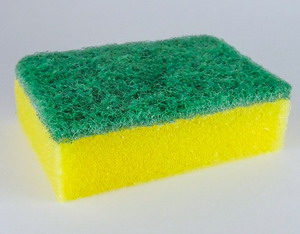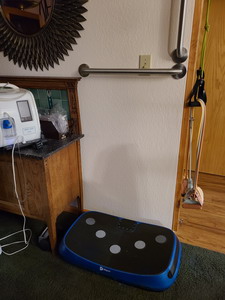 The week before last my newsletter focused on the underlying disease that is likely to result in each of our deaths — insulin resistance. This metabolic imbalance is the hidden cause of most heart disease, cancers, dementia, kidney disease, stroke, vascular disease, and the list just goes on and on. Even your chances of dying from an infectious disease like Covid are directly related to insulin resistance. In fact about the only major causes of death that are not related in this country are accidents, medical errors, and drug deaths. I covered the dietary causes of this hidden killer, but I did not go into much detail about what specifically to do to remedy this issue.
The week before last my newsletter focused on the underlying disease that is likely to result in each of our deaths — insulin resistance. This metabolic imbalance is the hidden cause of most heart disease, cancers, dementia, kidney disease, stroke, vascular disease, and the list just goes on and on. Even your chances of dying from an infectious disease like Covid are directly related to insulin resistance. In fact about the only major causes of death that are not related in this country are accidents, medical errors, and drug deaths. I covered the dietary causes of this hidden killer, but I did not go into much detail about what specifically to do to remedy this issue.
 Curiously, the most powerful intervention for insulin resistance lies in our muscle mass. As a reminder, insulin resistance occurs because of too much sugar floating around in the blood causing too much insulin to be released to get rid of it. If this happened only a couple of times a year, the body could handle it without too much problem. The problem is we Americans are dumping too much sugar and too much fat into our bodies several times every day. As a consequence, today, 83% of Americans have insulin resistance / metabolic syndrome. It takes several years of dietary abuse to develop this concern, so 83% is probably closer to 93% that are headed there. Being thin does not mean you do not have insulin resistance. In fact, the muscle wasting we see in old folks that are very thin is a classic sign of insulin resistance. They just don’t have enough muscle to prevent this problem from developing.
Curiously, the most powerful intervention for insulin resistance lies in our muscle mass. As a reminder, insulin resistance occurs because of too much sugar floating around in the blood causing too much insulin to be released to get rid of it. If this happened only a couple of times a year, the body could handle it without too much problem. The problem is we Americans are dumping too much sugar and too much fat into our bodies several times every day. As a consequence, today, 83% of Americans have insulin resistance / metabolic syndrome. It takes several years of dietary abuse to develop this concern, so 83% is probably closer to 93% that are headed there. Being thin does not mean you do not have insulin resistance. In fact, the muscle wasting we see in old folks that are very thin is a classic sign of insulin resistance. They just don’t have enough muscle to prevent this problem from developing.
 So what does muscle mass have to do with this? Your muscles act like sponges to soak up 80% of the sugar that gets dumped into your bloodstream if you have enough muscle mass. When the muscles are able to do this, you don’t end up having too much sugar in your blood and the normal insulin levels you produce are able to work just fine. But for this to happen you need a bunch of muscle fibers. Just for clarity, over 70% of your muscle fibers are in your legs. In order to help your muscles become the sugar-dumping place to prevent metabolic syndrome, you need some strong leg muscles. Six-pack abs and great pecs might look good at the beach, but in terms of preventing early death from some nasty disease, we are talking about massive quads, hamstrings, and glutes.
So what does muscle mass have to do with this? Your muscles act like sponges to soak up 80% of the sugar that gets dumped into your bloodstream if you have enough muscle mass. When the muscles are able to do this, you don’t end up having too much sugar in your blood and the normal insulin levels you produce are able to work just fine. But for this to happen you need a bunch of muscle fibers. Just for clarity, over 70% of your muscle fibers are in your legs. In order to help your muscles become the sugar-dumping place to prevent metabolic syndrome, you need some strong leg muscles. Six-pack abs and great pecs might look good at the beach, but in terms of preventing early death from some nasty disease, we are talking about massive quads, hamstrings, and glutes.
 An obvious condition necessary for the muscles to do this wonderful job for us is like any sponge, before it can soak anything up, it first has to be squeezed out. That means the sugar that is already stored in the muscle needs to be used up before it can soak up any more sugar. The reason the muscles like to soak up sugar is to store it for immediate use to generate the energy needed to create movement. If you suddenly need to jump into action, you can’t be waiting around for your liver to get around to making new sugar to burn, nor can you depend on the bloodstream having lots of sugar for you to use. Blood sugar levels vary up and down all the time. So muscles like to have a ready supply of energy on hand at all times.
An obvious condition necessary for the muscles to do this wonderful job for us is like any sponge, before it can soak anything up, it first has to be squeezed out. That means the sugar that is already stored in the muscle needs to be used up before it can soak up any more sugar. The reason the muscles like to soak up sugar is to store it for immediate use to generate the energy needed to create movement. If you suddenly need to jump into action, you can’t be waiting around for your liver to get around to making new sugar to burn, nor can you depend on the bloodstream having lots of sugar for you to use. Blood sugar levels vary up and down all the time. So muscles like to have a ready supply of energy on hand at all times.
 So what am I saying here? I am saying that not only do you need to have strong leg muscles, but you need to use them regularly to keep them ready to soak up excess sugar. Throughout human pre-history, this was never a problem. There were no cars. There were no chairs. There were no refrigerators. Humans had to use their legs all day every day. Their leg muscles were strong and got almost constant use. So if they came across a bee hive full of honey, they could dig in and eat as much as they wanted and their body was able to handle it. In general, it was only in the fall when their bodies would get a bit overloaded with excess sugar because of all the sugar-filled ripe fruit available. They actually developed a brief period of metabolic syndrome which pushed them to gain a lot of fat during the fall harvest season. However, this was all reversed during the winter when there was no food to eat and they had to live on the fat they stored after eating so much fruit. This physiology is why even today the simplest answer to early type 2 diabetes is a three-week water fast. If this interests you then I would refer you to the work of Dr. Jason Fung MD. He has corrected thousands of cases of diabetes with this method.
So what am I saying here? I am saying that not only do you need to have strong leg muscles, but you need to use them regularly to keep them ready to soak up excess sugar. Throughout human pre-history, this was never a problem. There were no cars. There were no chairs. There were no refrigerators. Humans had to use their legs all day every day. Their leg muscles were strong and got almost constant use. So if they came across a bee hive full of honey, they could dig in and eat as much as they wanted and their body was able to handle it. In general, it was only in the fall when their bodies would get a bit overloaded with excess sugar because of all the sugar-filled ripe fruit available. They actually developed a brief period of metabolic syndrome which pushed them to gain a lot of fat during the fall harvest season. However, this was all reversed during the winter when there was no food to eat and they had to live on the fat they stored after eating so much fruit. This physiology is why even today the simplest answer to early type 2 diabetes is a three-week water fast. If this interests you then I would refer you to the work of Dr. Jason Fung MD. He has corrected thousands of cases of diabetes with this method.
 For the rest of us that don’t yet need that level of correction, we can reverse our insulin resistance with regular exercise. We need to build more muscle mass in our legs primarily, and we need to use that mass basically after every meal that has carbs in it to burn up those carbs. I saw this in action a few weeks ago while I was wearing a continuous glucose monitor. With test meals high in carbs, I could watch in real-time how much my blood sugar levels would rise. When I ate carbs and then went to the gym, my blood sugar levels hardly rose up at all. My muscles were soaking up that sugar as fast as my gut was absorbing it. On the other hand, the couple times I ate a carb meal late in the day, I would watch my sugar levels jump 60 to 120 points. My only exercise after those meals was clicking keys on my computer keyboard.
For the rest of us that don’t yet need that level of correction, we can reverse our insulin resistance with regular exercise. We need to build more muscle mass in our legs primarily, and we need to use that mass basically after every meal that has carbs in it to burn up those carbs. I saw this in action a few weeks ago while I was wearing a continuous glucose monitor. With test meals high in carbs, I could watch in real-time how much my blood sugar levels would rise. When I ate carbs and then went to the gym, my blood sugar levels hardly rose up at all. My muscles were soaking up that sugar as fast as my gut was absorbing it. On the other hand, the couple times I ate a carb meal late in the day, I would watch my sugar levels jump 60 to 120 points. My only exercise after those meals was clicking keys on my computer keyboard.
 What kind of exercise am I talking about? Step one is a simple 10-minute walk after each meal. No special timing is involved. Anytime within about a 90-minute window is good. Studies have shown that walking at about 3 miles per hour will allow you to get the metabolic benefit from the walk. After doing the math, this basically means walking a half mile in 10 minutes. This 10 minutes could easily be done on a bicycle or indoors on a stationary bike. Any indoor exercise that involves the legs should do the trick. Put on some music and get your dance moves to happen for 10 minutes! Here is a nice set of at-home leg exercises most anyone can do. 31 Bodyweight Exercises That’ll Light Up Your Legs.
What kind of exercise am I talking about? Step one is a simple 10-minute walk after each meal. No special timing is involved. Anytime within about a 90-minute window is good. Studies have shown that walking at about 3 miles per hour will allow you to get the metabolic benefit from the walk. After doing the math, this basically means walking a half mile in 10 minutes. This 10 minutes could easily be done on a bicycle or indoors on a stationary bike. Any indoor exercise that involves the legs should do the trick. Put on some music and get your dance moves to happen for 10 minutes! Here is a nice set of at-home leg exercises most anyone can do. 31 Bodyweight Exercises That’ll Light Up Your Legs.
An interesting adjunct I use at home is to do squat exercises while on a vibration plate. The vibration stimulates those muscles more than with movement on solid ground.
To build more muscle mass, you will need to do some of these same squat or lung-based exercises while carrying more weight. This is easier to do in a gym,  but it is completely doable at home. This can be achieved by wearing a weight vest (or even a loaded backpack) while doing the exercises. A big tip that recently came out of some muscle research explained how you can get twice as much muscle mass gain from the eccentric portion of the exercise as you get from the concentric portion. The concentric portion is when the muscle contracts as you lift the weight and the eccentric portion is when the muscle slowly lengthens as you put the weight down. When I go to the gym and use the weight machines, I will contract to pull or push the weights up for 2 seconds and then slowly let the weight down for 20 seconds. I will do this 5 to 10 times or until I can’t do it anymore. I only do one set, but it will take me 2 to 3 minutes to do that set. I like super slow training because it is more time efficient and it greatly reduces the chances of injury.
but it is completely doable at home. This can be achieved by wearing a weight vest (or even a loaded backpack) while doing the exercises. A big tip that recently came out of some muscle research explained how you can get twice as much muscle mass gain from the eccentric portion of the exercise as you get from the concentric portion. The concentric portion is when the muscle contracts as you lift the weight and the eccentric portion is when the muscle slowly lengthens as you put the weight down. When I go to the gym and use the weight machines, I will contract to pull or push the weights up for 2 seconds and then slowly let the weight down for 20 seconds. I will do this 5 to 10 times or until I can’t do it anymore. I only do one set, but it will take me 2 to 3 minutes to do that set. I like super slow training because it is more time efficient and it greatly reduces the chances of injury.
 You can use this same principle at home. With a squat movement go down very slowly and up quickly. The same idea for a lunge. The idea is a rapid contraction of the muscle group and a slow extension of that muscle to return. I know this all sounds crazy, but the craziness is the consequence of how far we have gotten out of balance with how our bodies are supposed to function during the day. We are designed to move, and that movement is required for lots of other things for the body to work right. The single biggest stimulator of the brain is movement, not solving crossword puzzles or doing brain games. So if you want to fight memory loss, get up and move a lot. Via this insulin resistance pathway, all sorts of metabolic processes are impacted by a movement that you would never relate to movement. Movement is life, so keep on moving!
You can use this same principle at home. With a squat movement go down very slowly and up quickly. The same idea for a lunge. The idea is a rapid contraction of the muscle group and a slow extension of that muscle to return. I know this all sounds crazy, but the craziness is the consequence of how far we have gotten out of balance with how our bodies are supposed to function during the day. We are designed to move, and that movement is required for lots of other things for the body to work right. The single biggest stimulator of the brain is movement, not solving crossword puzzles or doing brain games. So if you want to fight memory loss, get up and move a lot. Via this insulin resistance pathway, all sorts of metabolic processes are impacted by a movement that you would never relate to movement. Movement is life, so keep on moving!
Take care,
David
